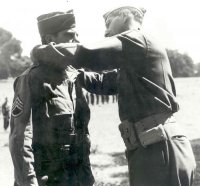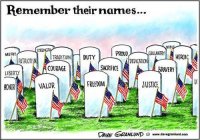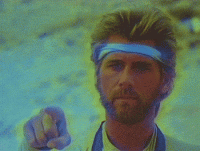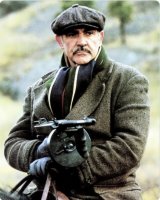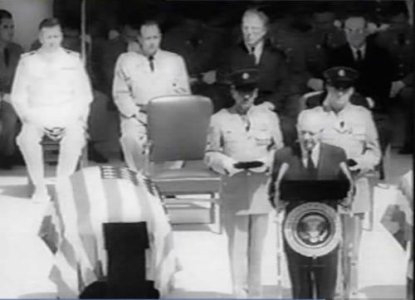OneManGang
Senior Member
- Joined
- Sep 7, 2004
- Messages
- 1,978
- Likes
- 9,349
Tennessee vs The Maxims vs Florida (1990)
DATE: 9 November 1990
PLACE: Neyland Stadium
ATTENDANCE: 96,874
FINAL SCORE: Tennessee 45 Florida 3
By 1932 the Southern Conference had grown to an unwieldy twenty member schools. Disaffection was high and on 8 and 9 December 1932, representatives of thirteen of those schools met in the old Farragut Hotel (now the Hyatt) on Gay Street in downtown Knoxville. They hammered out an agreement and emerged with the Charter for the Southeastern Conference with play to begin with the 1933 football season. Over the years the SEC lost three members: Sewanee, Georgia Tech and Tulane.
For much of its history, there was no set minimum of conference games. Most played six or seven but others as few as four.
Two of those charter members kicking off the 1933 season were the University of Tennessee and the University of Florida. Over the course of the next 57 seasons the Volunteers and the Gators played only nineteen times and one of those was a bowl game, a 14-13 loss by Tennessee in 1969 Gator Bowl. The game became a sore spot for Vol fans as just prior to kickoff, HeadVol Doug Dickey announced to the team he was resigning to be ChiefLizard at Florida. To say the Vol faithful, once they heard the news afterwards, were outraged, is putting it mildly. Dickey would be known to a legion of Vol fans as “Tricky Dickey.” A song with that title was in heavy rotation on local radio in early 1970. Doug Dickey would return to Tennessee as Athletics Director in 1985, but that is another story.
Another school left out of Tennessee's mix was Georgia. Tennessee only faced them ten times over that same period above. Indeed, the classic 17-17 tie in 1968 in front of a nation-wide audience marked the first time the Vols and Dawgs had squared off in three decades.
In 1990, the SEC announced it would expand to twelve teams with Arkansas and South Carolina joining. The league would be divided into a West Division and and East Division. The dividing line would be the line between the Eastern and Central time zones. Vanderbilt would be the only exception, playing in the East despite being in the Central time zone. In this new scheme, every team would play every other team in its division plus a two permanent opponents (cut to one in 2003) from the other division and rotating the others. The newly expanded league would begin play with the 1992 season.
For Tennessee this meant that from that point on, they would be playing Florida and Georgia every year and the permanent opponent from the west division would be Alabama.
In 1990, UT and the Gators were set to play in Neyland with a game the following year in Gainesville. This would smooth the transition into league play.
Tennessee was coming off an SEC Championship season. The Vols led the series 15-4.
The Vols were coached by Johnny Majors in his 14th season as HeadVol. Florida was led by first-year head coach Steve Spurrier. However, Spurrier and Majors had faced off in 1988 and '89 when Spurrier was coaching the Duke Blue Devils. The Vols split with Duke winning the '88 game and losing in '89.
So the 1990 game with the Gators represented a watershed. From that game forward for the foreseeable future, instead of playing once in a blue moon, the Vols and Florida would play every year. It was the birth of a new rivalry.
Florida rolled into town with a 5-0 mark and #9 ranking. Tennessee was 3-0-2 and ranked 5th. The Gators were ineligible for a conference title or bowl appearance that year because, well, Florida. Rampant violations during the Charley Pell and Galen Hall years resulted in the NCAA hammer being dropped.
Tennessee was coming off an open date after a 26-26 tie on the Plains while Florida had just trashed LSU 34-8.
The TV announcers were convinced that Coach Spurrier's passing attack, ably executed by quarterback Shane Matthews and a bevy of talented receivers, would humble the Vols.
It was Homecoming on the Hill. Neyland was packed and the stage was set. Many Gator fans were there as well and a number of them were in the south east end zone upper deck – right next to a block of student tickets.
Greg Burke handled the kickoff duties for the Vols and sent the opening kick into the end zone. The Gators did absolutely nothing and punted.
The Vols took the ensuing punt down to the Florida 31 where they stalled and Burke came on to attempt a 38-yarder that missed.
The two teams then exchanged punts. Matthews then led the Gators down the field to the UT 35 where, apparently tiring of watching the punters work out, he tossed the ball to Tennessee's Shon Walker, who gleefully accepted the gift and the Vols were in business.
End of 1st Quarter
Score: Tennessee 0 Florida 0
Andy Kelly then engineered a 17-play 79-yard drive that was capped when fullback Greg Amsler took the hand off from the one and dove over a pile of Lizards and Vols into the end zone.
There was another exchange of punts before The Giant Water Lizards got their offense on track and drove down to the Tennessee 13 whence the Vol defense stiffened and Florida had to settle for an Arden Czyzewski field goal.
More punting ensued until the Vols got the ball on their own 23 and made it out to their 32. Time was expiring and Offensive Coordinator Philip Fulmer decided to go for a kill shot. Kelly faded to throw and heaved the ball as far as he could – straight into the the hands of Florida's Will White who set sail and it looked like he would be the one providing the heroics, sprinting for 50 yards before tripping over one of his own blockers on the Tennessee 30 as the clock expired.
End of 2nd Quarter
Score: Tennessee 7 Florida 3
The Pride of the Southland, along with their Alumni Band put on a rousing halftime show. This was followed by the annual, interminable, scene of Fratrats and Sorhoes congratulating each other on their ability to spend Daddy's Money on homecoming floats and decorations.
Florida's Czyzewski kicked off the open the second half. It was a “directional” kick designed to keep the ball away from Dale Carter, widely regarded as one of the best return men in the country. The kick angled toward the west sideline. It landed on the 13 and bounced. Carter fielded it on the 9 and took off. The Gators had all moved in that direction but if John Majors had learned one thing at the Genrul's knee it was the kicking game. A few well placed blocks and a number of Lizards getting in each others way allowed Carter to work his way up the sideline, breaking tackles and out into the middle of the field. 91 yards later, with his teammates continuing to keep Gators off his back, the result was announced to the “Statewide Stadium” by John Ward, “Is there a flag on the play? I don't see one! Fifteen! Ten! Five! Four! Three! Two! One! TOUCHDOWN CARTER! TENNESSEE SCORES!”
Carter said after the game, “I knew Florida was going to kick to us on the sidelines. So I was ready.”
Florida had taken their next possession into Tennessee territory when Shon Walker blasted Errict Rhett who coughed up the ball. Jeremy Lincoln recovered and the Vols drove down with Tony Thompson doing the honors capping a 62-yard drive by flashing into the checkerboards from 13 yards out.
Florida was forced to punt and the Vols struck again. In the Orange & White game, Tennessee had run a “flea flicker.” This time it was for real. Kelly flipped the ball back to tight end Von Reeves who then launched a long pass which hit Carl Pickens in stride on the 7 for a 47-yard touch down. This writer was at every home game that year and that was the ONLY pass to hit Pick in stride the whole season.
Shane Matthews was intercepted yet again and the Vols drove down to the 18 but stalled and Greg Burke missed on the field goal attempt.
By now, a shell-shocked Shane Matthews had been replaced by Brian Fox. Fox was in the process of being sacked when he flipped the ball toward an open Gator. Reggie Ingram stepped in front of the ball and was next seen in the checkerboards.
End of 3rd Quarter
Score: Tennessee 35 Florida 3
Florida had the ball as the final quarter began. However, Fox tossed yet another interception, Dale Carter's second of the night. Tennessee drove to the Florida 19 where Greg Burke FINALLY hit the 36-yard attempt.
The Florida faithful had seen enough and began to flee. As those in the southern upper deck filed past the UT student section, the students began jingling their keys at them. I remarked to My Bride that this was going to be a helluva series.
Florida's travails were not over as they managed to fumble the ball on their own 23. Sterling Henton ended the blood letting by strolling in from the 4 on a play that foreshadowed Sir Peyton against Alabama. Henton sold a fake handoff to Thompson and the Gators massed to stop him. “Pearl” then simply pulled the ball out and strolled around left end.
Florida turned the ball over yet again, but Tennessee didn't push it and turned the ball back on downs and that, pretty much, was that.
Final Score:
Tennessee 45 Florida 3
********
Prime Minister Winston Churchill fancied himself a gifted military strategist. As Operation TORCH, the invasion of North Africa and defeat of the German Afrika Korps wound down, he began to agitate for further operation in the Mediterranean Theater (MTO). He espoused that Sicily, Italy and Greece represented the “Soft Underbelly” of German-occupied Europe. By comparison, the Americans were pushing for Operation ROUNDUP, a planned invasion of France in 1943.
Churchill went over the heads of Marshall and Ike and sold his idea to Franklin Roosevelt. In a way, he was right, just not in the way he intended. The U.S. Army was not yet ready to go toe-to-toe with Hitler's legions and until air superiority had been established over France, any invasion ran the very real risk of disaster.
And so the Americans found themselves committed to a Mediterranean strategy. They groused and privately fumed about wasting effort “nibbling” on the edges of Nazi power but they were good soldiers and when the President gave the order, they saluted, said, “Yes, Sir!” and did their damnedest to get it done.*
On 10 July 1943, the Allies landed on Sicily, securing the island in a five-week campaign.
Churchill again successfully argued for an invasion of Italy. He as confident that, after the Italian surrender, the Germans would retreat to the far north of Italy. They didn't. The Germans established a series of defensive lines across the breadth of the peninsula and managed to tie down over 600,000 Allied troops with a a force roughly half that size. Far from being a triumphal sweep up the “boot” of Italy, it degenerated into a war of “mud, mules, and mountains.”
Starting in December, 1943, the Allied advance bogged down along the “GUSTAV” Line about 60 miles short of Rome. They would be stuck there for another six months.
After about a month of this, Churchill again intervened and called for an “end run” with a landing at Anzio to bypass the German lines and clear the way to Rome. On 22 January 1944 the landings took place.
For more on the Anzio landings, go here: Tennessee vs The Maxims vs South Carolina
One of the Americans pinned down in the Anzio beach head was a young Corporal from Cleveland, TN, named Paul B. Huff. Huff was a member of A Company of the 509th Parachute Infantry Battalion. They were conducting operations on the American left. The Germans were probing the American lines in preparation for a major attack scheduled for 11 February. On 8 February, Cpl. Huff led a six-man patrol to locate some German machine guns.
For conspicuous gallantry and intrepidity at risk of life above and beyond the call of duty, in action on 8 February 1944, near Carano, Italy. Cpl. Huff volunteered to lead a six-man patrol with the mission of determining the location and strength of an enemy unit which was delivering fire on the exposed right flank of his company. The terrain over which he had to travel consisted of exposed, rolling ground, affording the enemy excellent visibility. As the patrol advanced, its members were subjected to small-arms and machine-gun fire and a concentration of mortar fire, shells bursting within 5 to 10 yards of them and bullets striking the ground at their feet. Moving ahead of his patrol, Cpl. Huff drew fire from three enemy machine guns and a 20-mm weapon. Realizing the danger confronting his patrol, he advanced alone under deadly fire through a minefield and arrived at a point within 75 yards of the nearest machine-gun position. Under direct fire from the rear machine gun, he crawled the remaining 75 yards to the closest emplacement, killed the crew with his submachine gun, and destroyed the gun. During this act he fired from a kneeling position which drew fire from other positions, enabling him to estimate correctly the strength and location of the enemy. Still under concentrated fire, he returned to his patrol and led his men to safety. As a result of the information he gained, a patrol in strength sent out that afternoon, one group under the leadership of Cpl. Huff, succeeded in routing an enemy company of 125 men, killing 27 Germans, and capturing 21 others, with a loss of only three patrol members. Cpl. Huff's intrepid leadership and daring combat skill reflect the finest traditions of the American infantryman.
Cpl. Huff was promoted to Staff Sergeant soon after this action. He received his Medal of Honor from Gen. Clark in a ceremony in newly-liberated Rome on 8 June 1944. He was then sent on a War Bond Tour in the U.S. While in the U.S. the presentation ceremony was repeated with President Roosevelt at the White House.
After the War, Huff stayed in the Army and eventually became Command Sgt. Major of the 1st Brigade of the 101st Airmobile Division and served as such in Vietnam. He retired with over 30 years service. He left on his last patrol on 21 September 1994.
In 1988, the CSM Paul B. Huff Parkway was dedicated in his hometown of Cleveland, TN.
In 1958, Sgt. Huff gave his original Medal to President Eisenhower to be presented to the Unknown Soldier of WWII. Afterwards, he wore a duplicate Medal.
He was that kind of soldier.
*Classical reference
********
So, how did the Vols do against The Maxims?
1. The team that makes the fewest mistakes will win.
Florida failed to generate any offense in the 3rd quarter. Spurrier pointed out that UT's pass rush was highly effective and that he couldn't recall the Vols ever blitzing.
2. Play for and make the breaks. When one comes your way … SCORE!
The Vols scored on five of Florida's eight turnovers. It would be hard to do much better.
3. If at first the game – or the breaks – go against you, don't let up … PUT ON MORE STEAM!
Florida was pumped after their 2nd quarter field goal and pass interception to end the first half. Dale Carter drove a nail into that.
4. Protect our kickers, our quarterback, our lead and our ballgame.
How do you spell defensive dominance? Florida had 77 net yards of total offense in the second half. That went along with SIX interceptions and two lost fumbles in that same half. The Genrul smiled.
5. Ball! Oskie! Cover, block, cut and slice, pursue and gang tackle … THIS IS THE WINNING EDGE.
Shon Walker, Dale Carter and Reggie Ingram had monster games. Walker had nine total tackles (one for loss), a forced fumble, a broken up pass and an interception. Carter had two tackles and two Oskies to go with his kickoff return. Ingram had 5 tackles (one for loss) a fumble recovery, and, of course, his pick six.
6. Press the kicking game. Here is where the breaks are made.
Greg Burke had on off night - or maybe not - since he only hit 38% of his field goal attempts that season. However, Carter's 91-yard score made up for any number of sins.
7. Carry the fight to Florida and keep it there for sixty minutes,
By the time Sterling Henton strolled into the end zone with 9:01 left on the clock most of the Gator faithful had fled and the players were edging toward the dressing rooms.
The very next week, the high-flying Vols, ranked #3 in the nation, lost a 9-6 (no, that is NOT a mis-print) snooze-fest on a last-second field goal to an unranked 2-3 Alabama. Yes, you got that right, a team that boasted the likes of Carl Pickens and Alvin Harper at receiver and Tony Thompson at running back with future NFL first round picks Charles McRae (7) and Antone Davis (8) anchoring the offensive line, could only generate TWO freakin' FIELD GOALS against an Alabama team that went 7-5 and ended up dropping an embarrassing 34-7 loss to Louisville in the Fiesta Bowl. If you've ever wondered what 90,000 wet cats would look like, you should have been amongst the Vol faithful leaving Neyland that day. I honestly think that performance was the beginning of the slippery slope that saw Johnny Majors adjourned in 1992.
With Florida disqualified, despite the Auburn tie and the Alabama fiasco, Tennessee waltzed to the 1990 SEC Title and a trip to the Sugar Bowl. That Sugar Bowl game against Virginia was a nail-biter that was decided by a Tony Thompson touchdown at the end of the game.
Florida beat the Vols in Gainesville in 1991, but lost to Heath Shuler and the Vols in 1992 with Tennessee under interim Head Coach Philip Fulmer.
After 1992, Florida began a period of absolute dominance over Our Beloved Vols. When league play began that year, Tennessee owned Florida 16-5. Steve Spurrier would prove to be Coach Fulmer's White Whale. Even Sir Peyton of New Orleans proved unequal to the task, never winning against the Gators during his four years on The Hill. How bad was it? In the 9 subsequent meetings, until Spurrier's departure from The Swamp after the 2001 season, Tennessee won but two games, in 1998 and in 2001.
The series now stands in Florida's favor 31-22, with an 11-game streak of Vol losses from 2005-2015.
I can recall posters on another board oinking during the latter years of Fulmer's career about “upper-level mediocrity” referring to the Vols routinely winning 9, 10 or 11 games but not either of the big prizes. Their solution was that Fulmer needed to go to allow Tennessee to ascend once again to greatness. They got their wish after the 2008 season. Any Vol who lived through the subsequent years before the arrival of Josh Heupel in 2021, will, I think, attest that “upper-level mediocrity” would have been vastly preferable to what actually happened.
Be careful what you wish for.
Suggested Reading:
Rick Atkinson, The Day of Battle: The War in Sicily and Italy, 1943-44 (Liberation Trilogy vol. 2)
a/n: If you haven't read this and its companion volumes An Army at Dawn and The Guns at Last Light, do so.
Martin Blumenson, Mediterranean Theater of Operations: Salerno to Cassino U.S. Army in World War II
Carlo D'Este, Fatal Decision: Anzio and the Battle for Rome
Gen. Mark Clark presents the Medal of Honor to SSGT Paul Huff, 8 June 1944. (U.S. Army)
